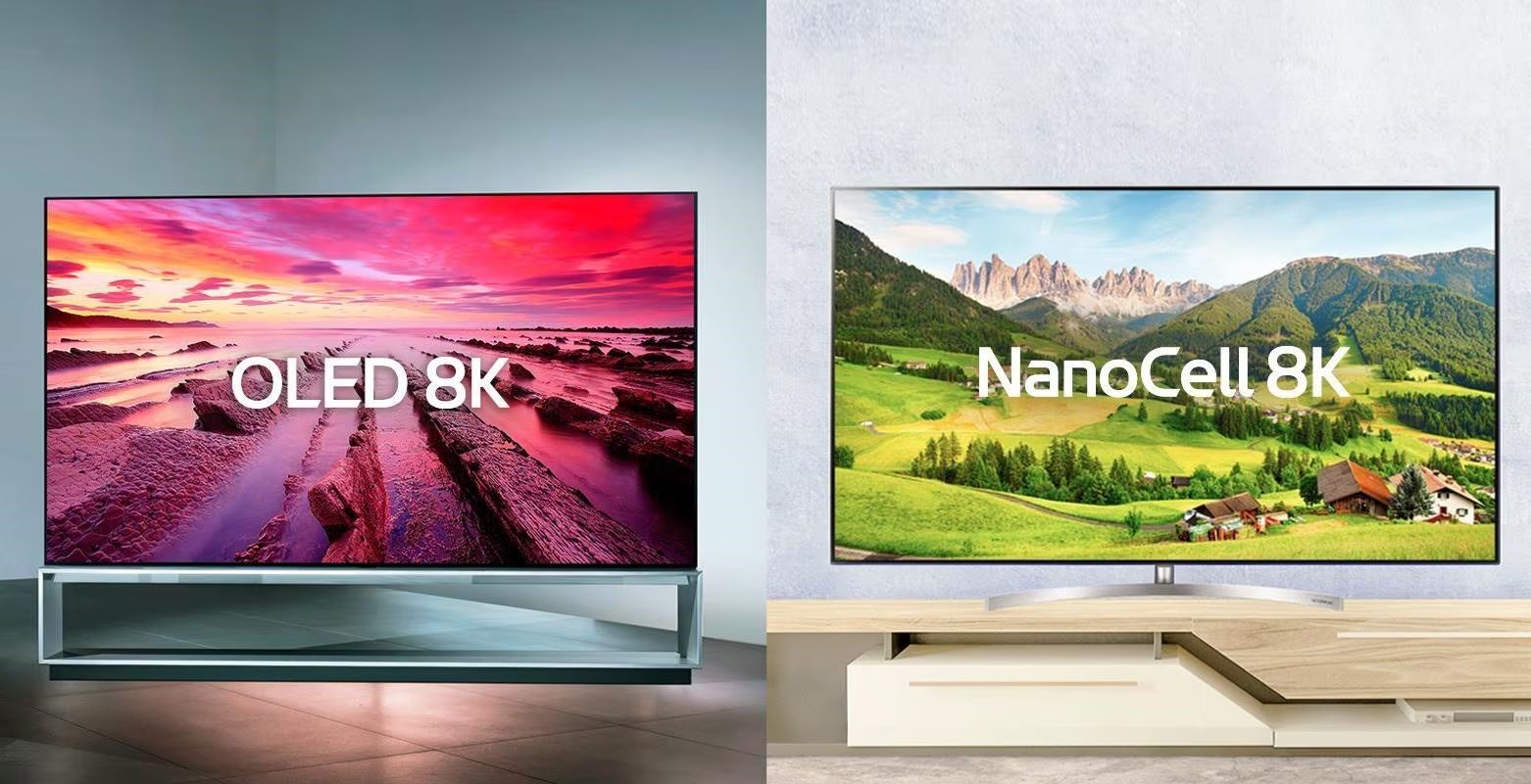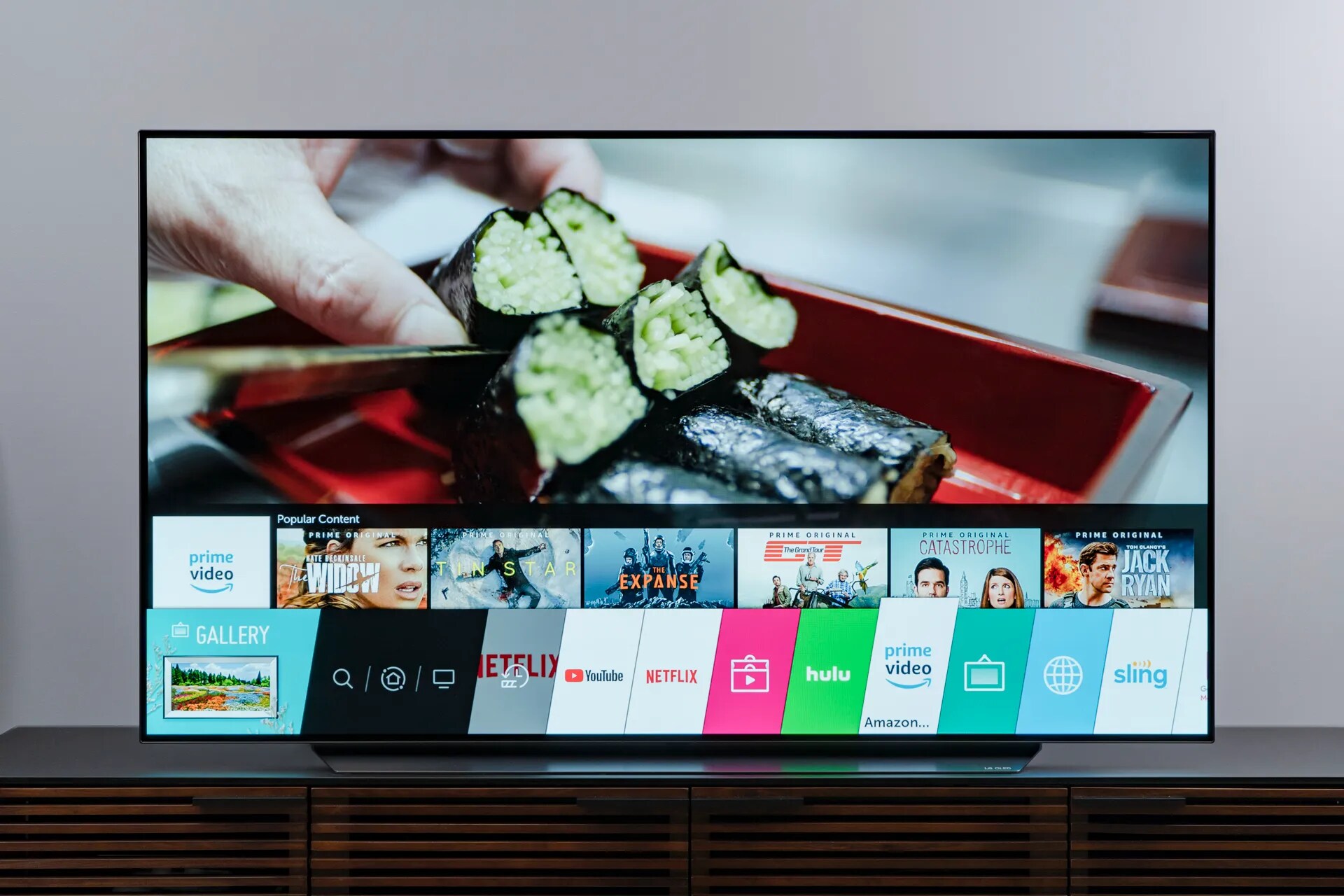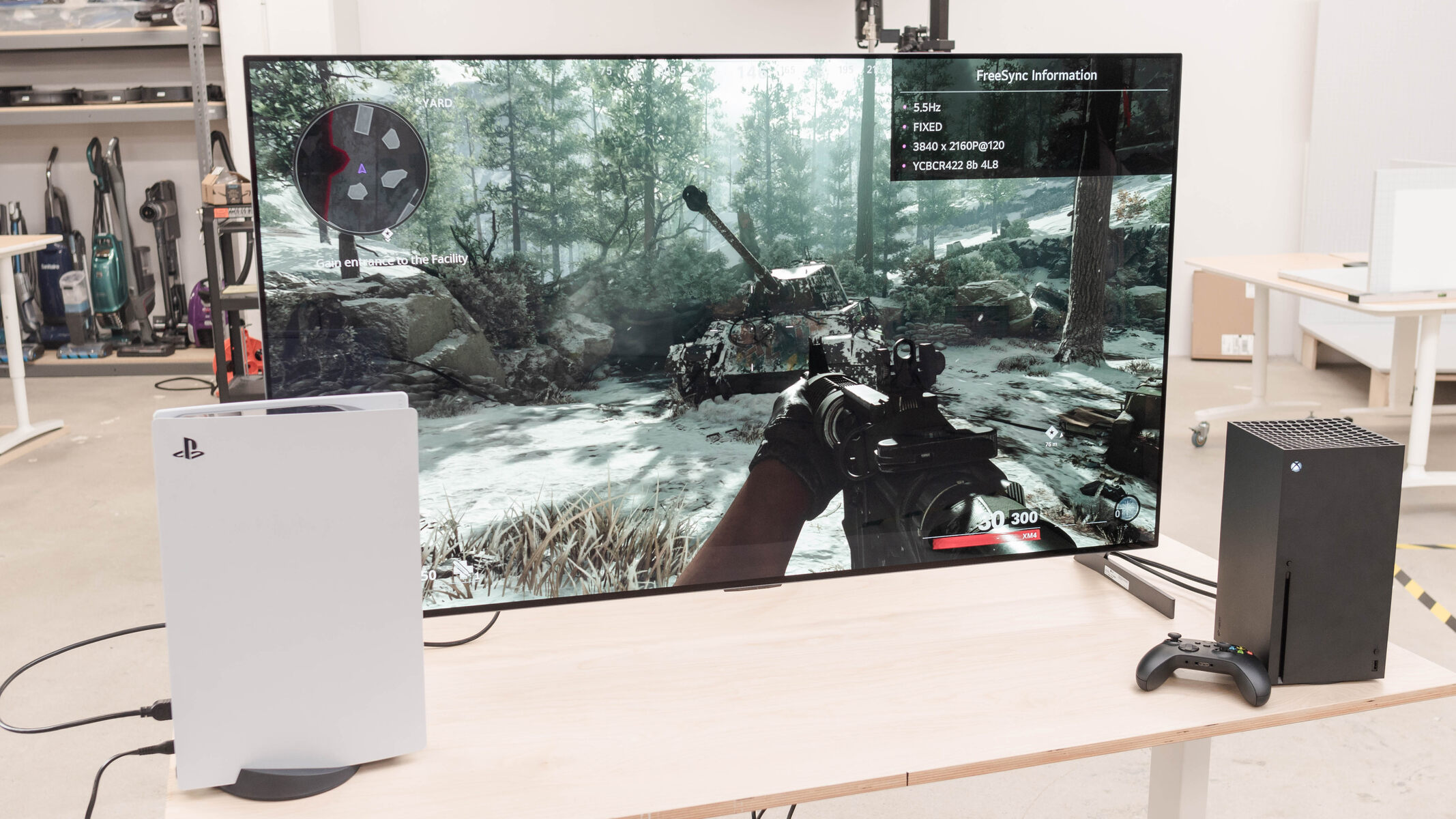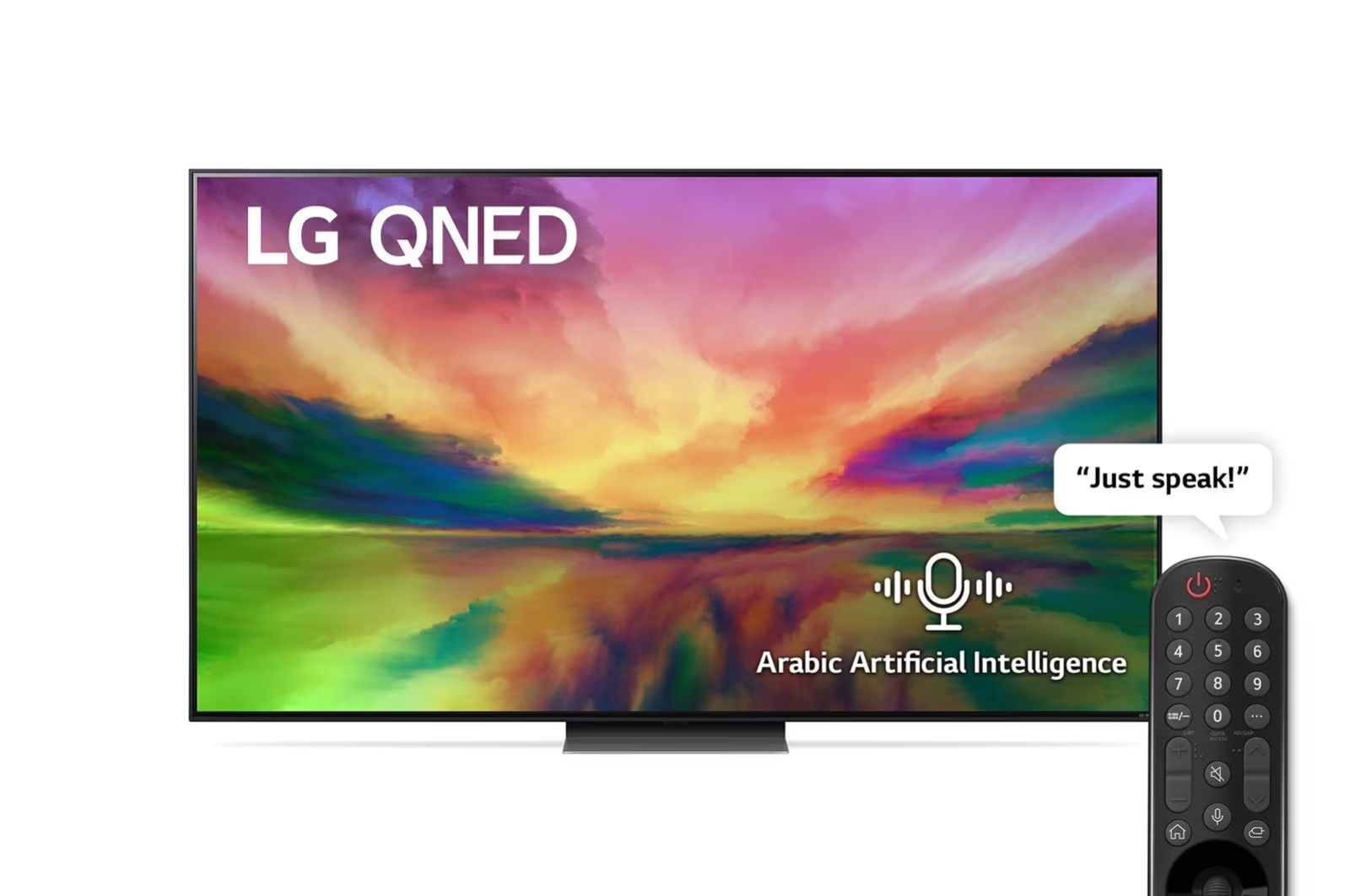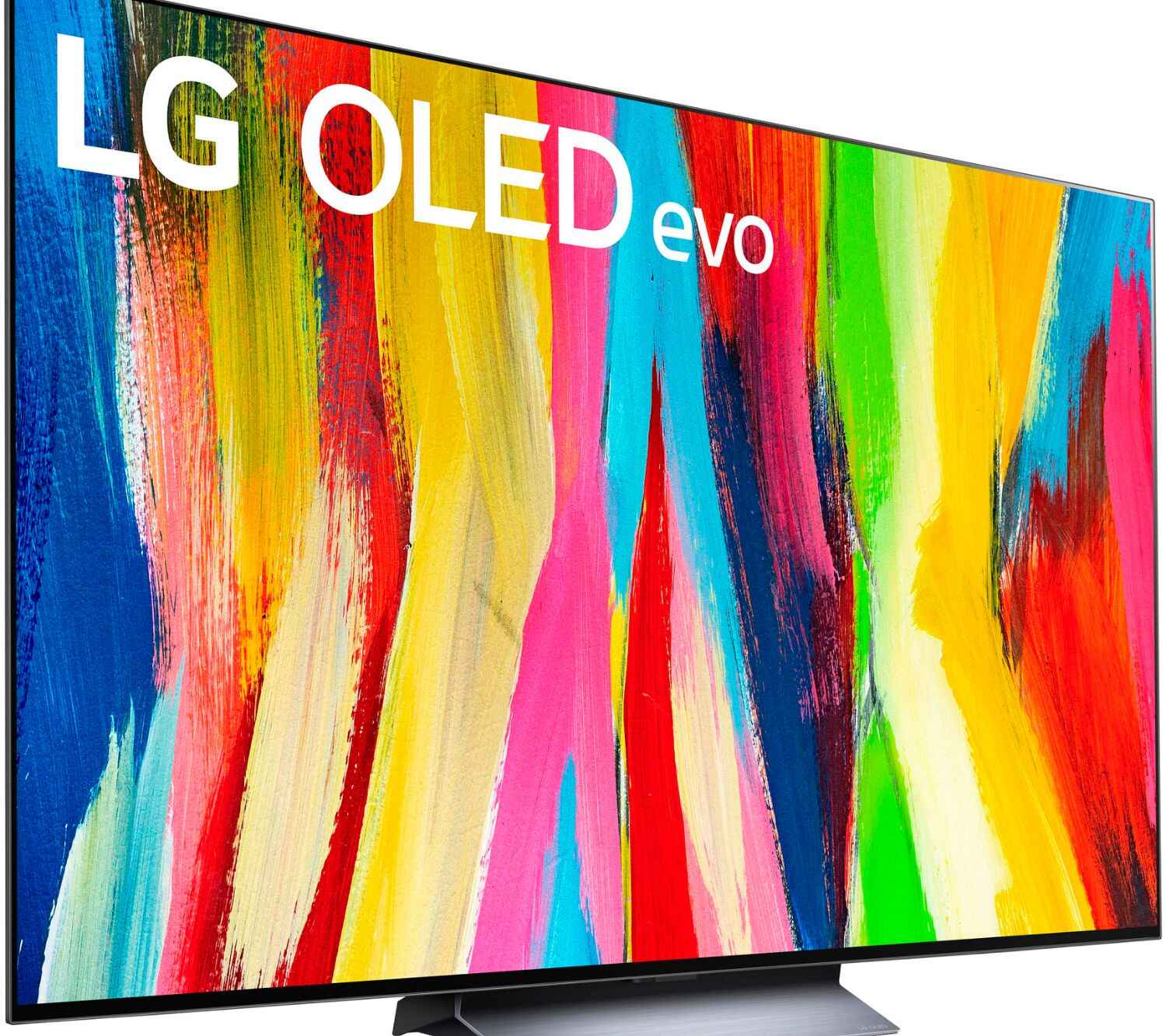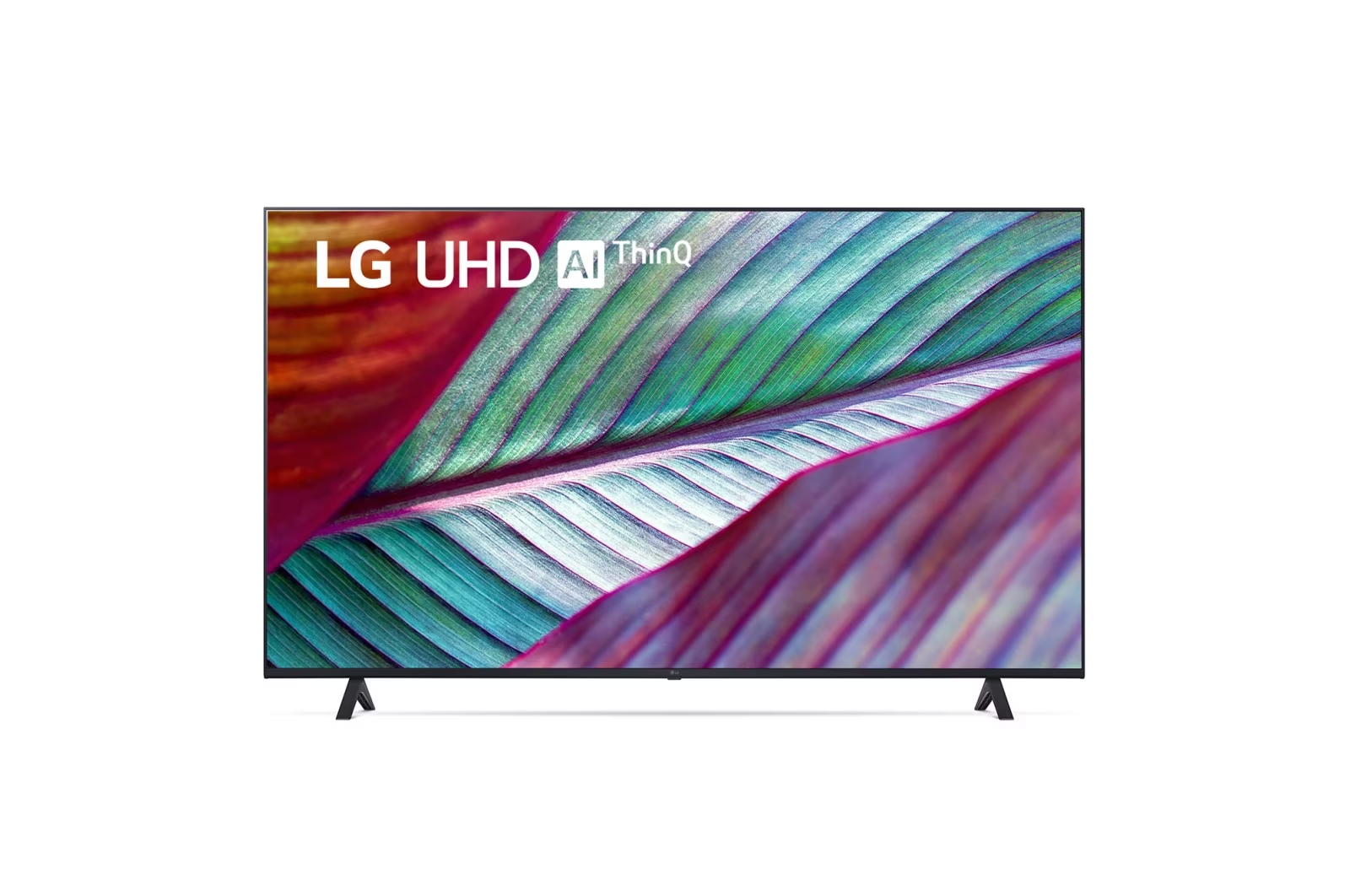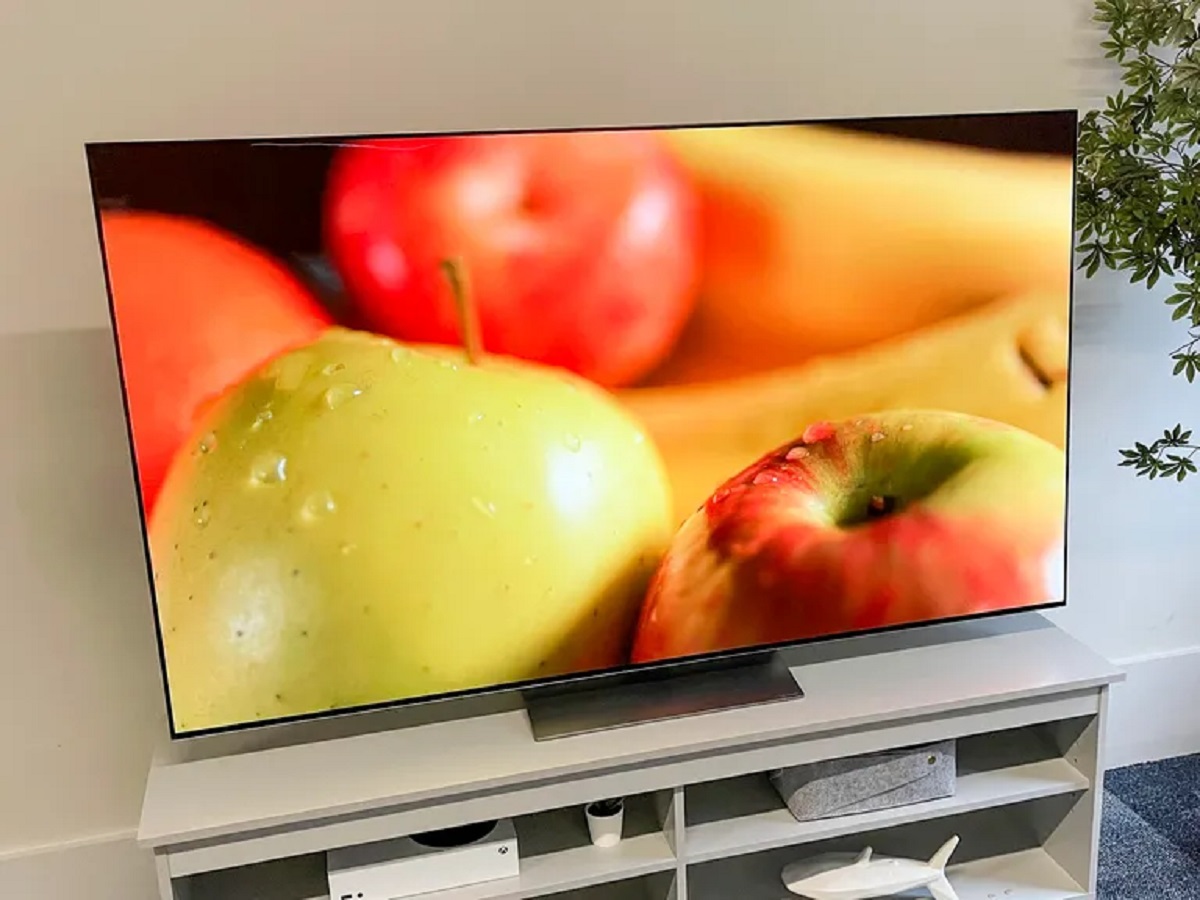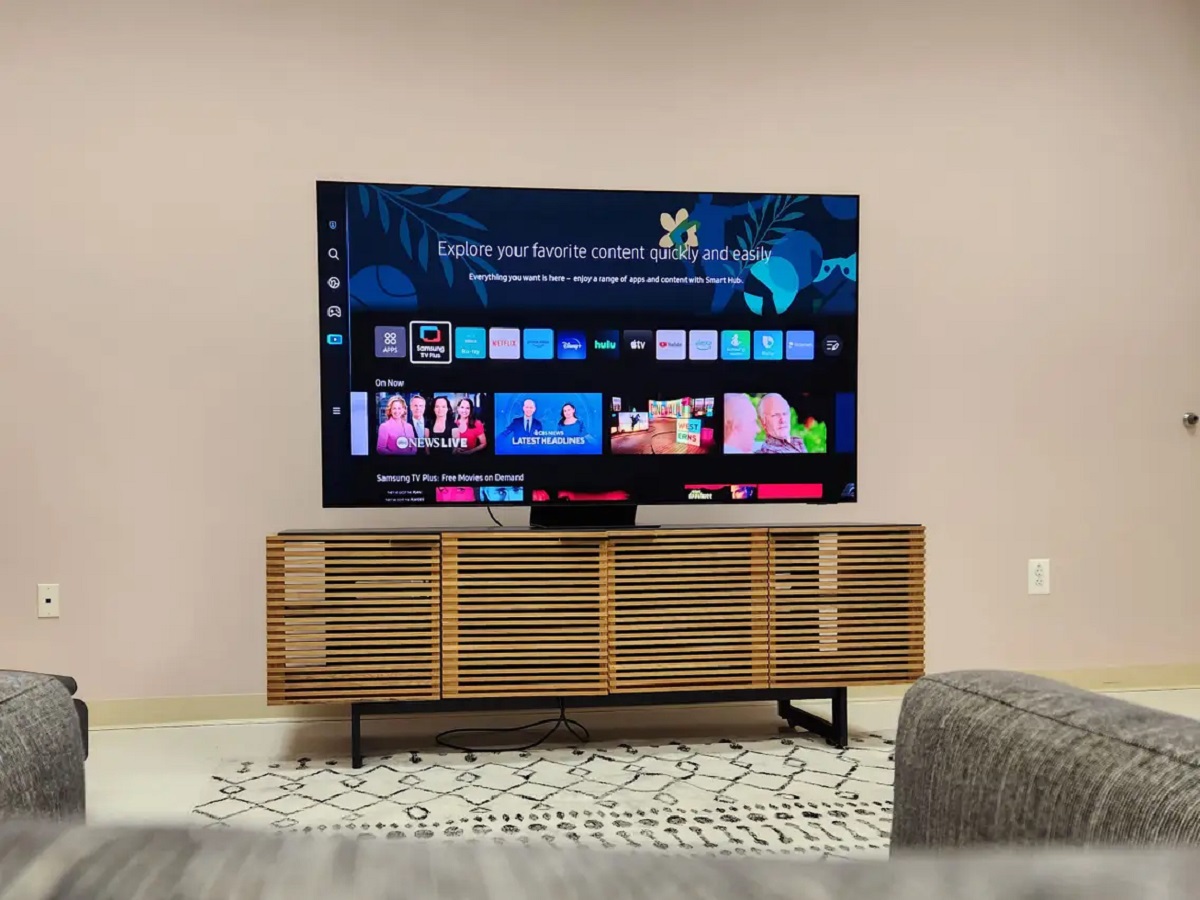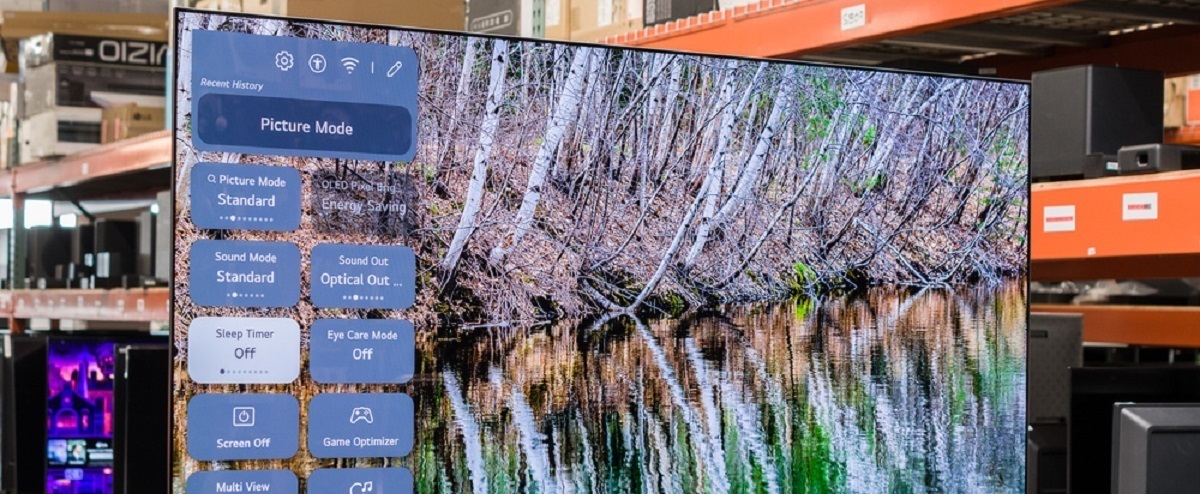What is Nano Cell technology?
Nano Cell technology is a display technology developed by LG Electronics that enhances the quality of LCD panels. It is designed to overcome some of the limitations of traditional LCD (liquid crystal display) technology, offering improved color accuracy, contrast, and wider viewing angles.
The key component of Nano Cell technology is the use of nanometer-sized particles called quantum dots, which are embedded into the LCD display panel. These quantum dots act as a filter, absorbing unwanted light wavelengths and enhancing the purity of the primary colors – red, green, and blue – that are displayed on the screen.
By utilizing these quantum dots, Nano Cell technology is able to produce a wider color gamut, resulting in more accurate and vibrant colors. It can display a greater range of hues and shades, allowing for a more immersive and lifelike viewing experience.
Another advantage of Nano Cell technology is its ability to improve contrast. The quantum dots help to reduce light leakage, resulting in deeper blacks and brighter whites. This enhances the overall image quality, making details more pronounced and enhancing the overall visual impact.
In addition, Nano Cell technology improves the viewing angles of LCD displays. Traditional LCD panels tend to experience color distortion and reduced image quality when viewed from the side. With Nano Cell technology, this issue is minimized, allowing for a consistent and accurate picture quality from various angles. This makes it suitable for larger screen sizes and ensures that everyone in the room can enjoy an optimal viewing experience.
Nano Cell technology also boasts a faster response time, reducing motion blur and ghosting effects, making it ideal for fast-paced content such as sports or action movies.
Overall, Nano Cell technology enhances the performance of LCD panels by improving color accuracy, contrast, viewing angles, and response time. It offers a compelling alternative to other display technologies, such as OLED, allowing viewers to enjoy stunning visuals without compromising on practicality or price.
What is OLED technology?
OLED (Organic Light Emitting Diode) technology is a display technology that has gained popularity in recent years due to its ability to deliver outstanding picture quality and design flexibility.
OLED displays are made up of organic materials that emit light when an electric current is passed through them. Unlike LCD panels that require a separate backlight, each individual pixel in an OLED display emits its own light, resulting in deeper blacks, higher contrast ratios, and vibrant colors.
One of the major advantages of OLED technology is its ability to achieve perfect black levels. When a pixel is turned off, it produces no light, resulting in a true black. This enables OLED displays to deliver unparalleled contrast ratios, making for a more immersive and realistic viewing experience.
Another characteristic of OLED technology is its wide color gamut. With the ability to produce pure and saturated colors, OLED displays offer vibrant and accurate color reproduction. This makes them ideal for watching movies, gaming, and viewing other visually rich content.
One of the key features that set OLED apart from other display technologies is its flexibility. OLED panels can be made thin, lightweight, and even curved, offering design possibilities that were previously impossible. This flexibility allows for innovative and unique form factors, such as curved TVs and flexible displays for smartphones and wearable devices.
Additionally, OLED displays have excellent viewing angles. Unlike LCD displays that exhibit color shifts and loss of brightness when viewed off-axis, OLED panels maintain consistent image quality and color accuracy even when viewed from different angles. This makes OLED TVs ideal for group viewing scenarios.
However, it is important to note that OLED displays are susceptible to screen burn-in. Constant display of static elements, such as logos or static images, can cause permanent damage to the screen, resulting in the retention of those elements even when displaying other content. Manufacturers have implemented technologies to mitigate this issue, but it is still a factor to consider when choosing an OLED display.
In terms of response time, OLED technology offers incredibly fast pixel response, virtually eliminating motion blur. This makes OLED displays well-suited for fast-paced content, such as sports or action-packed movies.
In summary, OLED technology provides exceptional picture quality, including deep blacks, vibrant colors, and excellent viewing angles. Its flexibility in design allows for innovative form factors, and its fast response time ensures smooth motion. However, caution must be exercised to prevent screen burn-in. OLED displays are a top choice for those seeking an immersive viewing experience with stunning visual performance.
Display quality
When comparing Nano Cell and OLED technology, one of the key factors to consider is display quality. Both technologies offer impressive visuals, but there are some differences to be aware of.
OLED technology is renowned for its ability to deliver deep blacks and infinite contrast ratios. Each individual pixel in an OLED display emits its own light and can be turned off completely, resulting in true blacks and exceptional contrast. This creates a visually striking image with incredible depth and detail. Additionally, OLED displays offer wide color gamut and accurate color reproduction, making for vibrant and lifelike visuals.
On the other hand, Nano Cell technology improves upon traditional LCD technology by enhancing color accuracy and contrast. The use of quantum dots helps to deliver a wider color gamut, resulting in more vibrant and accurate colors. While Nano Cell displays may not achieve the same level of contrast as OLED, they still offer impressive picture quality with rich colors and sharp details.
In terms of viewing angles, both technologies have their advantages. OLED displays have excellent viewing angles, ensuring consistent image quality even when viewed from the side. This makes OLED TVs a great choice for larger rooms or situations where multiple viewers will be watching from different angles. Nano Cell displays also provide improved viewing angles compared to traditional LCD panels, but they may not match the level of OLED in this regard.
When it comes to response time, OLED technology typically outperforms Nano Cell. The individual pixel illumination in OLED displays allows for near-instantaneous response, resulting in minimal motion blur or ghosting. This makes OLED displays particularly well-suited for fast-paced content such as sports or action movies. While Nano Cell technology also offers faster response times compared to traditional LCD panels, it may not quite match the level of responsiveness that OLED displays provide.
In summary, both Nano Cell and OLED technology offer impressive display quality. OLED displays excel in delivering deep blacks, infinite contrast ratios, and exceptional color reproduction. They also have excellent viewing angles and fast response times. Nano Cell technology enhances traditional LCD panels with improved color accuracy and contrast, making for vibrant visuals. While Nano Cell may not achieve the same level of contrast and viewing angles as OLED, it still offers a compelling picture quality option.
Color accuracy and vibrancy
When it comes to color accuracy and vibrancy, both Nano Cell and OLED technology offer impressive capabilities, but there are some distinctions to consider.
OLED technology is well-regarded for its ability to produce vibrant and accurate colors. Each pixel in an OLED display emits its own light, resulting in rich and saturated colors that truly pop. OLED displays also have a wide color gamut, allowing for a larger range of hues and shades to be displayed. This means that colors appear more lifelike and true to the original content, making OLED displays particularly well-suited for watching movies, gaming, and other visually demanding applications.
Nano Cell technology also excels in color accuracy and vibrancy. The use of quantum dots in Nano Cell displays helps to enhance color purity and saturation, resulting in vivid and vibrant visuals. Quantum dots act as a filter, absorbing unwanted light wavelengths and ensuring that the primary colors – red, green, and blue – are accurately displayed on the screen. This enables Nano Cell displays to deliver a wide color gamut and reproduce colors with great precision.
While both technologies offer impressive color performance, OLED displays tend to have a slight edge when it comes to producing deep blacks and high contrast ratios, which can further enhance color vibrancy. The ability of OLED pixels to individually turn off completely when displaying black results in a true black level, allowing colors to appear more vibrant and standout against a true black background.
It is important to note that personal preferences and viewing conditions can impact the perception of color accuracy and vibrancy. Factors such as ambient light, color settings, and content calibration can influence the overall viewing experience. Additionally, OLED displays may be more susceptible to variation in color accuracy over time due to factors like panel aging and image retention, although manufacturers have made significant improvements in this regard.
In summary, both Nano Cell and OLED technology offer impressive color accuracy and vibrancy. OLED displays excel in producing deep blacks and high contrast ratios, which can enhance color vibrancy. Nano Cell technology, on the other hand, utilizes quantum dots to deliver vivid and accurate colors on LCD panels. Ultimately, the choice between Nano Cell and OLED will depend on individual preferences and specific requirements.
Contrast ratio
Contrast ratio is an important factor to consider when comparing display technologies like Nano Cell and OLED. It refers to the difference between the brightest and darkest parts of an image, with a higher contrast ratio leading to a more visually striking and immersive viewing experience.
OLED technology is renowned for its ability to achieve deep blacks and infinite contrast ratios. This is because each pixel in an OLED display can be turned off individually, resulting in true black. With no light being emitted from turned-off pixels, the contrast between dark and bright areas of the image is significantly enhanced. This creates a more dynamic and lifelike image with exceptional depth and detail.
Nano Cell technology, on the other hand, improves upon traditional LCD panels by enhancing contrast ratios. The use of quantum dots in Nano Cell displays helps to reduce light leakage and enhance color purity, resulting in deeper blacks and brighter whites. While Nano Cell displays may not achieve the same level of contrast as OLED, they still offer impressive performance with noticeable improvements over traditional LCD technology.
It is worth noting that contrast ratios can vary between different models and manufacturers within each technology. Factors such as panel quality, backlighting techniques, and image processing algorithms can all impact the actual contrast performance of a display.
When it comes to real-world usage, the high contrast ratios of OLED displays can significantly enhance the viewing experience, especially in content with a lot of dark scenes or high levels of contrast. The deep blacks create a greater sense of depth and realism, making the visuals more immersive and engaging. However, it is important to mention that the difference in contrast ratios may not be immediately noticeable in everyday use for non-demanding content.
In summary, OLED technology stands out when it comes to contrast ratio, offering deep blacks, infinite contrast, and exceptional visual depth. Nano Cell technology improves upon traditional LCD displays by delivering better contrast performance with the use of quantum dots. Choosing between the two will depend on individual preferences and the importance placed on high contrast ratios for specific use cases or content.
Viewing angles
Viewing angles refer to the range of angles from which a display can be viewed without a significant reduction in image quality. Both Nano Cell and OLED technologies offer advantages in terms of viewing angles, although there are slight differences to consider.
OLED displays are renowned for their excellent viewing angles. Each pixel in an OLED panel emits its own light, allowing for consistent image quality and color accuracy even when viewed from off-axis positions. This means that viewers can enjoy a clear and vibrant picture from various seating positions in a room. This makes OLED displays particularly well-suited for scenarios such as group viewing or when viewers may be seated to the side of the screen.
Nano Cell technology also offers improved viewing angles compared to traditional LCD panels. While it may not match the level of OLED in this regard, Nano Cell displays have minimized the color distortion and loss of image quality typically experienced with LCDs when viewed from the side. This means that viewers can still enjoy a good viewing experience even when not directly facing the screen.
It is worth noting that the extent of the advantage in viewing angles may vary depending on the specific model and manufacturer within each technology. Design factors and panel quality can impact the overall viewing angle performance.
Viewing angles become particularly important in larger rooms or scenarios where multiple viewers may be watching the screen from different positions. Both Nano Cell and OLED technologies excel in providing ample viewing angles to ensure a more inclusive and enjoyable viewing experience for all viewers in the room.
In summary, OLED technology offers outstanding viewing angles, allowing for consistent image quality and color accuracy even when viewed from off-axis positions. Nano Cell technology also provides improved viewing angles compared to traditional LCDs, although not at the level of OLED. Both technologies cater to the needs of viewers who may not be directly facing the screen, ensuring that everyone can enjoy a clear and vibrant picture from different angles.
Response time
Response time is an important factor to consider when evaluating display technologies like Nano Cell and OLED. It refers to the speed at which pixels can change from one color to another, and it affects how well a display can handle fast-moving images without motion blur or ghosting.
OLED technology is known for its exceptionally fast response time. Each pixel in an OLED display can change its state virtually instantaneously, resulting in minimal motion blur and ensuring that fast-moving scenes appear crisp and clear. This makes OLED displays well-suited for watching sports, action movies, or playing fast-paced video games where quick and smooth transitions are essential to maintaining image quality.
Nano Cell technology also improves upon traditional LCD panels by enhancing response times. While it may not achieve the same lightning-fast response as OLED, Nano Cell displays offer significantly improved response times compared to standard LCD panels. This reduction in response time greatly reduces motion blur and ghosting effects, resulting in better visual clarity during fast-paced content.
It is important to note that the actual response times of displays can vary between different models and manufacturers within each technology. Factors such as the refresh rate, panel quality, and image processing can also affect the overall responsiveness of a display.
When it comes to real-world usage, the fast response times of both Nano Cell and OLED displays contribute to an enhanced viewing experience, particularly for content with lots of motion or rapid scene changes. The ability of pixels to change quickly results in sharper images and reduced blurring, allowing viewers to enjoy smooth and fluid visual transitions.
In summary, OLED technology offers exceptionally fast response times, virtually eliminating motion blur and ghosting effects. Nano Cell technology improves upon traditional LCD panels by reducing response times and delivering better visual clarity during fast-paced content. Both technologies contribute to an enhanced viewing experience, ensuring smooth and crisp visuals during action-packed scenes or fast-moving content.
Screen burn-in
Screen burn-in is a phenomenon that can occur with OLED displays. It refers to the permanent retention of static images or icons on the screen, even when those elements are no longer being displayed. This can happen when the same image or static content is continuously displayed for extended periods of time, causing certain pixels to age differently and resulting in visible ghost images.
OLED displays are more susceptible to screen burn-in compared to other display technologies like Nano Cell. This is because OLED pixels emit their own light, and each pixel degrades over time with use. The degradation can lead to uneven wear on the pixels, which becomes noticeable as persistent ghost images or patterns on the screen.
Manufacturers have implemented various technologies and algorithms to help mitigate the risk of burn-in. These include pixel shifters, screen savers, and even automatic pixel refreshing cycles. These techniques aim to distribute the workload across pixels and minimize the chances of any particular pixel aging faster than others.
On the other hand, Nano Cell technology does not suffer from the same degree of susceptibility to burn-in as OLED. Nano Cell displays use LCD panels with LED backlighting rather than self-emitting pixels. While it is still possible to have temporary image retention on Nano Cell displays, it is generally less pronounced and more transient compared to OLED burn-in.
It is important to note that screen burn-in is typically a gradual process and may not be immediately noticeable with typical usage patterns or content. Burn-in is more likely to occur in scenarios where static images or elements are displayed for extended periods, such as persistent logos in news tickers or video game HUDs.
To minimize the risk of burn-in, it is recommended to vary the content displayed on OLED screens and avoid static images or icons for prolonged periods. It is also advisable to enable any built-in burn-in prevention features provided by the manufacturer and adjust screen settings to optimize longevity, such as reducing screen brightness or utilizing screen savers during idle periods.
In summary, OLED displays are more prone to screen burn-in compared to Nano Cell displays. The self-emitting nature of OLED pixels contributes to the risk of uneven aging, which can result in visible ghost images on the screen. While manufacturers have implemented techniques to reduce the likelihood of burn-in, it remains a factor to consider, especially for those who regularly display static elements for prolonged periods.
Price
Price is often an important consideration when choosing between display technologies like Nano Cell and OLED. While the cost of specific models may vary depending on size, features, and brand, there are some general trends to consider.
OLED displays tend to be more expensive than Nano Cell displays. The technology and manufacturing process involved in producing OLED panels are more complex and costly, resulting in higher price tags. The price difference can be particularly noticeable in larger screen sizes.
Nano Cell technology, on the other hand, offers a more budget-friendly option compared to OLED. While Nano Cell displays still provide enhancements over traditional LCD panels, they are generally more accessible to a wider range of consumers, especially those who are seeking improved picture quality within a more affordable price range.
It is important to note that as technology advances, the price gap between OLED and Nano Cell displays is gradually narrowing. In recent years, the prices of OLED displays have become more competitive, making them more accessible to a broader audience. However, OLED displays still tend to command a premium price due to their superior image quality and high demand.
When making a purchasing decision, it is crucial to consider personal budget constraints and priorities. While OLED displays offer stunning picture quality and advanced features, they may not be within everyone’s budget. Nano Cell displays provide a more affordable alternative without compromising too heavily on image quality and visual enhancements.
It is also worth noting that price should not be the sole determining factor in choosing a display technology. Other factors such as intended usage, picture quality requirements, and personal preferences should also be considered to ensure the most suitable option is selected within the desired price range.
In summary, OLED displays are generally more expensive than Nano Cell displays due to the more advanced technology involved. Nano Cell displays offer a more affordable alternative without sacrificing too much in terms of picture quality and enhancements. Cost considerations should be balanced with other factors to make an informed decision based on individual needs and preferences.
Conclusion
When comparing Nano Cell and OLED technologies, it is evident that both offer impressive advancements in display quality and visual performance. Each technology has its unique strengths and considerations to weigh when making a decision.
OLED technology stands out for its ability to deliver deep blacks, infinite contrast ratios, vibrant colors, and excellent viewing angles. It offers a visually striking and immersive viewing experience, particularly for content with high contrast and fast motion.
Nano Cell technology, on the other hand, enhances traditional LCD panels by improving color accuracy, contrast, and viewing angles. It provides a more budget-friendly option while still offering vibrant visuals and enhanced performance compared to standard LCD displays.
Factors such as screen burn-in susceptibility, price, and response times should also be considered. OLED displays are more prone to screen burn-in, although manufacturers have implemented technologies to mitigate this issue. OLED displays tend to be more expensive compared to Nano Cell, although prices are becoming more competitive. Response times are faster on OLED displays, offering minimal motion blur and ghosting effects, while Nano Cell displays also provide notable improvements over traditional LCD panels.
Ultimately, the choice between Nano Cell and OLED technologies depends on individual preferences, budget constraints, and the specific requirements of the viewing environment. OLED technology excels in providing stunning visuals for those with a higher budget, while Nano Cell technology offers an accessible option for those seeking an enhanced display experience without breaking the bank.
By carefully considering the display quality, color accuracy, contrast ratio, viewing angles, response time, screen burn-in susceptibility, and price, individuals can make an informed decision and select the display technology that best suits their needs and provides an enjoyable viewing experience for years to come.







